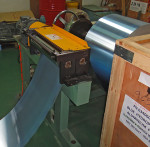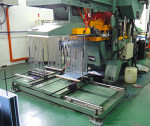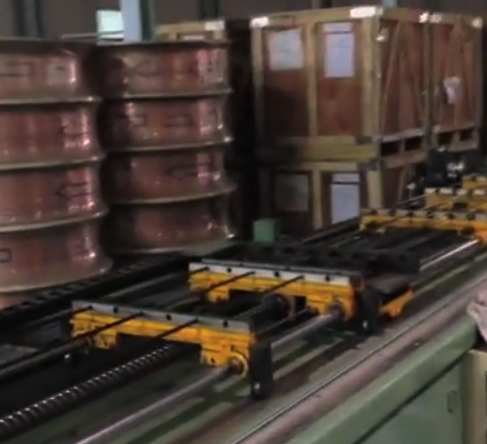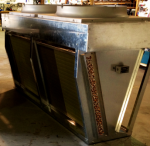Some of you may have seen our YouTube videos that displayed two different stages of our coil construction. For those of you that missed them, they are shown at the end of this post.
At the inception of this process, we first need to pull the hydrophilic coated aluminum sheet off the roll and run it through our press, where the fin stock can be formed, punched and cut to length. (See video 1).
Since different size coils require different fin stock lengths and also accept different size copper tubing, we make sure to stack all the same finished fin stock together, avoiding any confusion later in this process. Majority of the fin stock we use is 0.006″ thick, which is 20-40% thicker than our commercial competitors. We also use non-lanced fins as opposed to lanced fins, which can be a magnet for dust and debris. What this means for our customers is a longer operational life and a more durable product.
Next, the copper tubing (where the refrigerant travels) needs to be bent and cut to length as needed for each coil. (See video 2). Much like the fin stock, the tubing travels through a machine that bends it as needed and then cuts it to a specified length. Bending the copper where possible, instead of brazing the pieces together, helps to reduce the number of possible leak points.
At this point the coil pieces are assembled into the coil casing. At Smartech and Smart Family, we use a full casing as well as an intermediate tubesheets. This increases the rigidity of the coil and reduces flexing. The tubing that was previously bent and cut is slid into the holes of the fin stock and the open ends are brazed together with elbow bends (joining the tubes together to form a full refrigerant circuit). Once fully assembled, you have a complete refrigerant coil, whether for evaporator, condenser, or cooling duty.
Condenser Fin Manufacture (Video 1)
Coil Assembly (Video 2)





